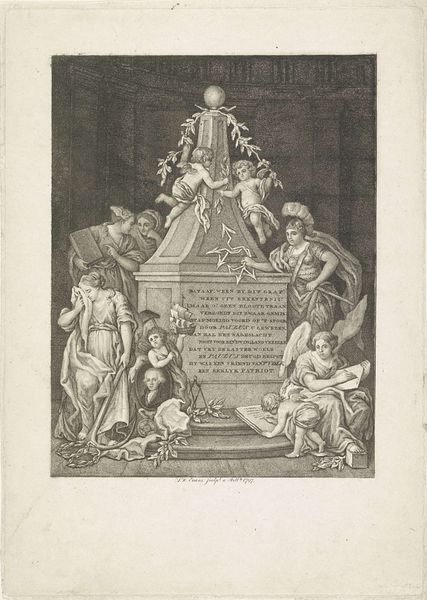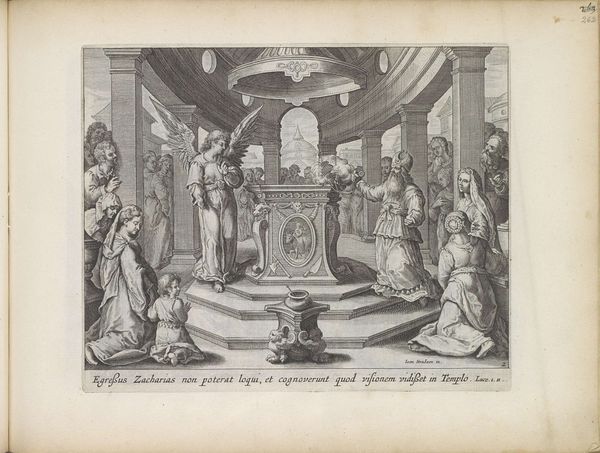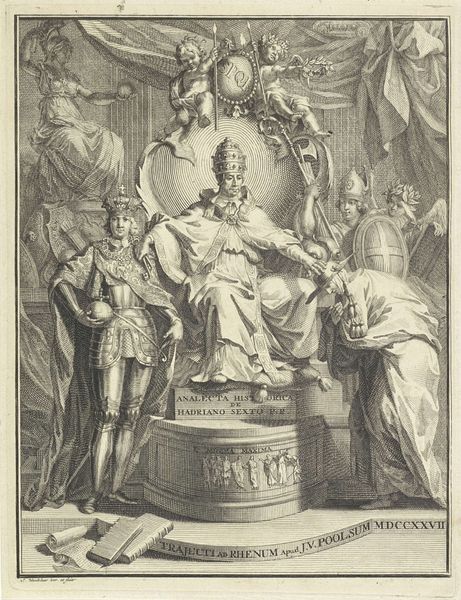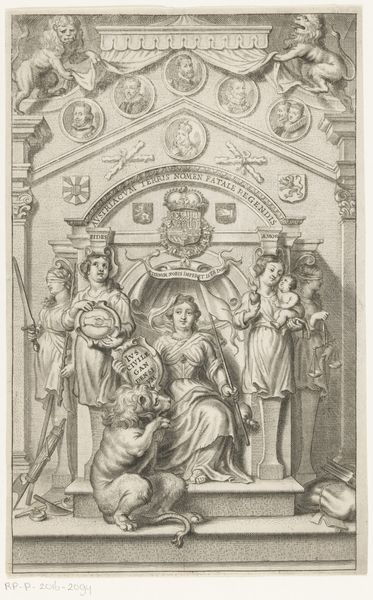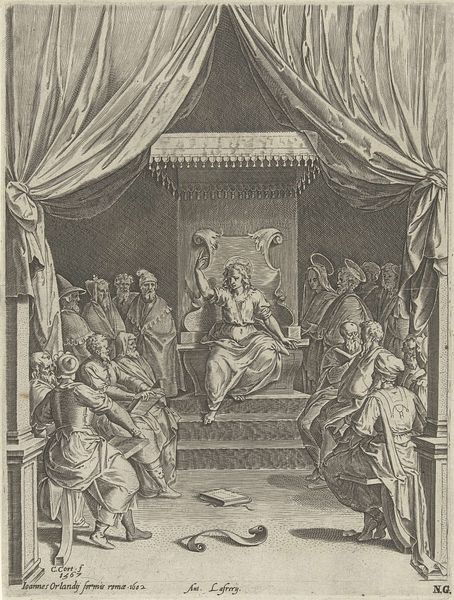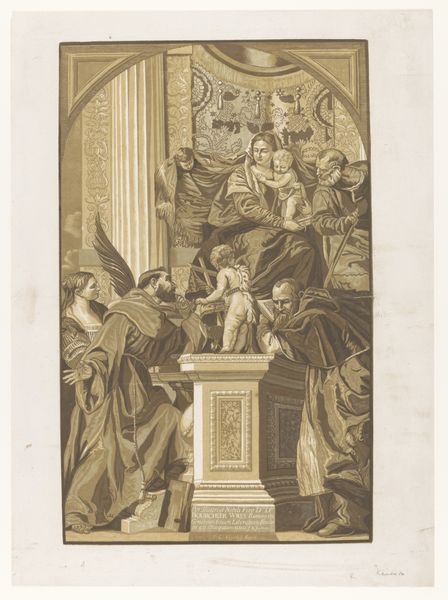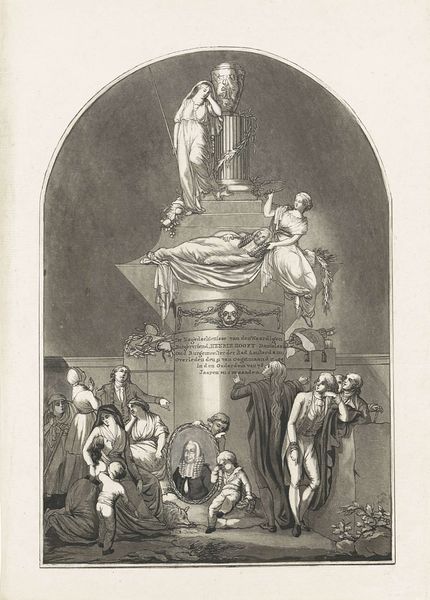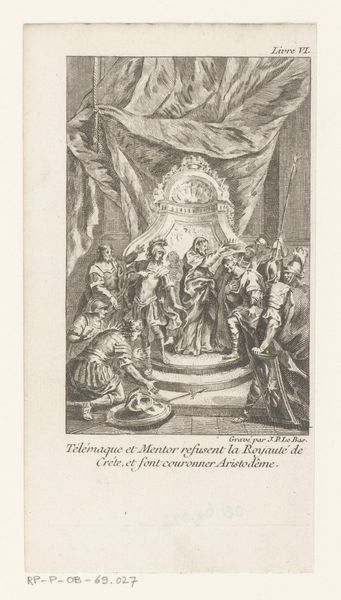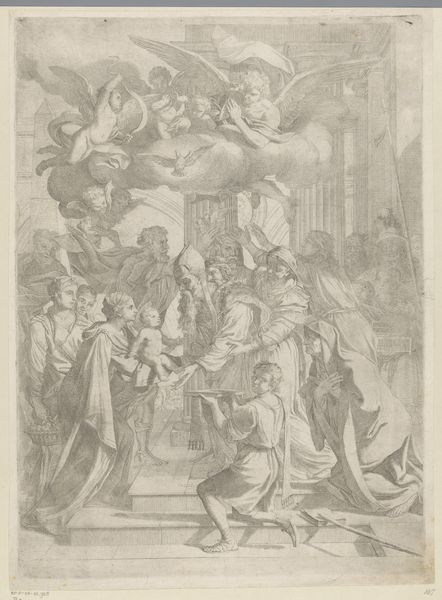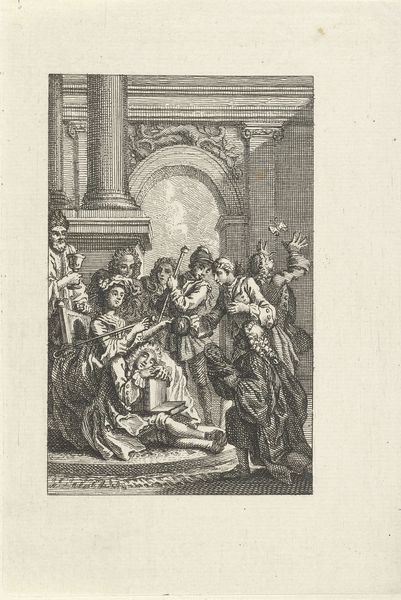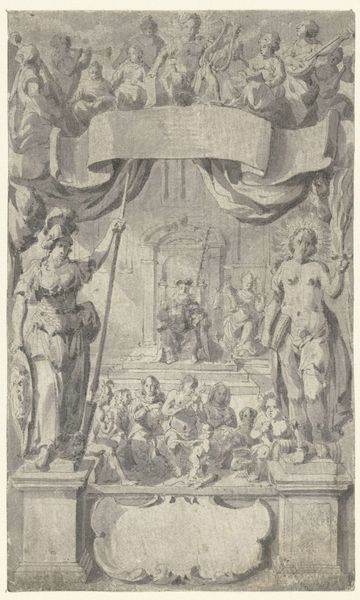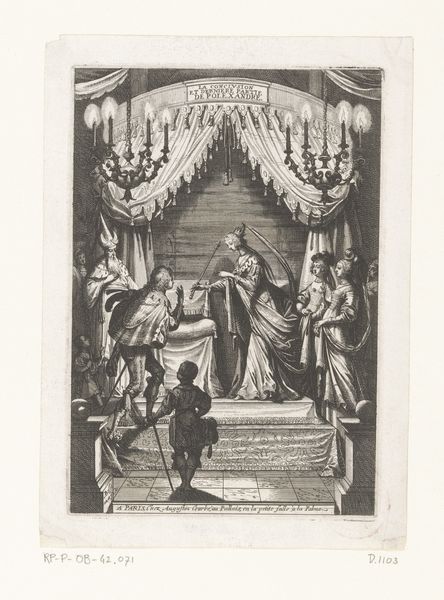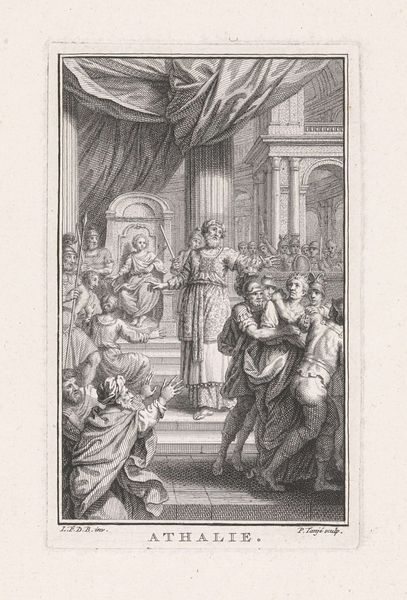
print, engraving
neoclacissism
narrative-art
old engraving style
caricature
figuration
pencil drawing
history-painting
academic-art
engraving
Dimensions: height 270 mm, width 214 mm
Copyright: Rijks Museum: Open Domain
Curator: Looking at this piece, the first thing I notice is its almost sepia-toned quality, and the stark subject matter, a visual reminder of historical and biblical storytelling. What are your immediate impressions? Editor: Immediately, I'm struck by the labor and materials implied here—the fine lines of the engraving suggest a demanding process, the transfer of image from plate to paper; but how does the material itself—ink, paper, tools—impact the interpretation? Curator: Good question. The piece, "Oordeel van Salomo," or "The Judgement of Solomon" by Cornelis Brouwer from 1782, presents us with more than just material production; the very selection of this biblical narrative—a powerful king making a judgement about motherhood and truth—demands an interrogation of power structures and societal values. What stories did this period deem worthy of dissemination, and why? Editor: Exactly! This being a print suggests wider consumption, mass production, if you will. The labor invested extends beyond the artist to the distribution and likely, a demand fueled by the rise of neoclassicism, no? I am wondering if those visual elements relate in any way to print's democratizing influence, potentially shaping a wider public's understanding of justice and governance. Curator: It's a sharp point. The narrative itself – two women claiming the same child – inherently deals with intersectional themes of gender, class, and social status. Each character can be understood through various positionalities that highlight inequality. Think about how Brouwer renders them: What do their expressions, postures, and attire reveal about their respective societal roles and struggles within this moment of public adjudication? Editor: So we are dealing with ink, labor, class and representation then. By the look of the print, its likely drypoint, perhaps etching as well, to accomplish its remarkable textures. The production and dissemination of Brouwer's engraving participates within this socio-economic context – the commodification of narratives, the creation of aesthetic value from craft, reflecting complex webs of production and consumption that defined late 18th-century society. Curator: I appreciate you bringing the socio-economic elements into sharper focus. It helps highlight not only how meaning is embedded, but that every interpretation can become a moment of resistance, a potential means to dismantle and reform existing societal norms. Editor: Indeed, prompting us to consider our own contemporary consumption habits as it relates to knowledge and value in art making.
Comments
No comments
Be the first to comment and join the conversation on the ultimate creative platform.
